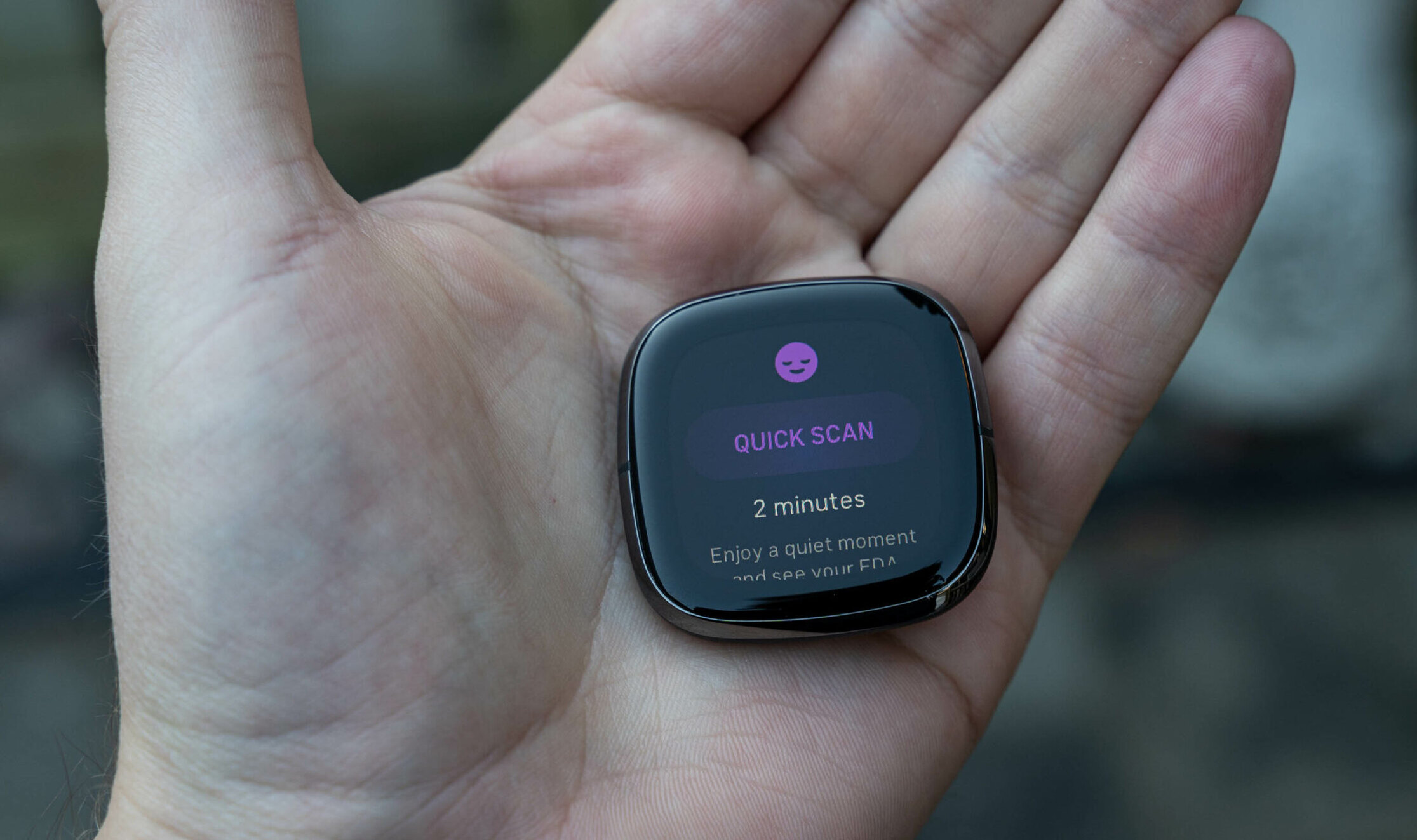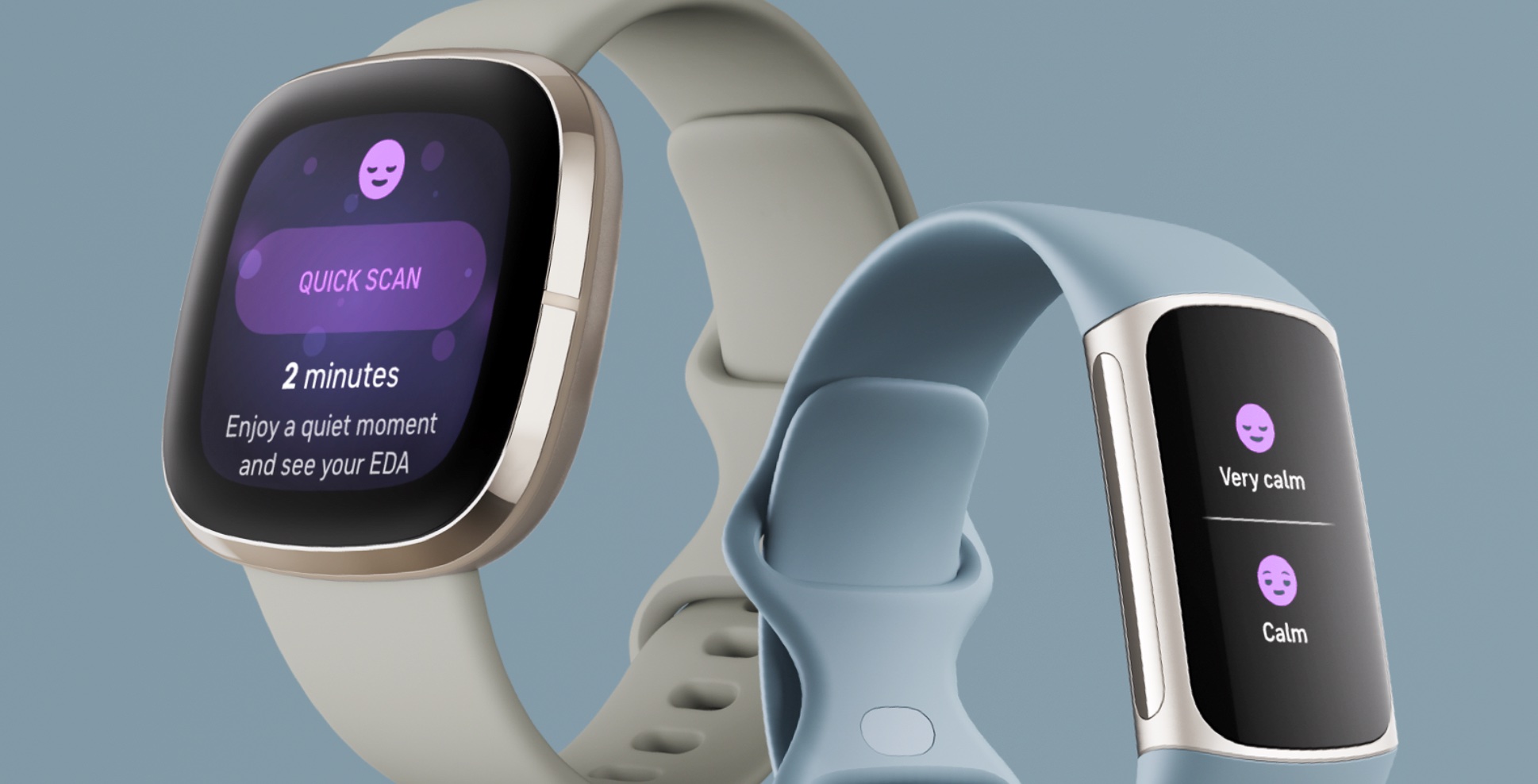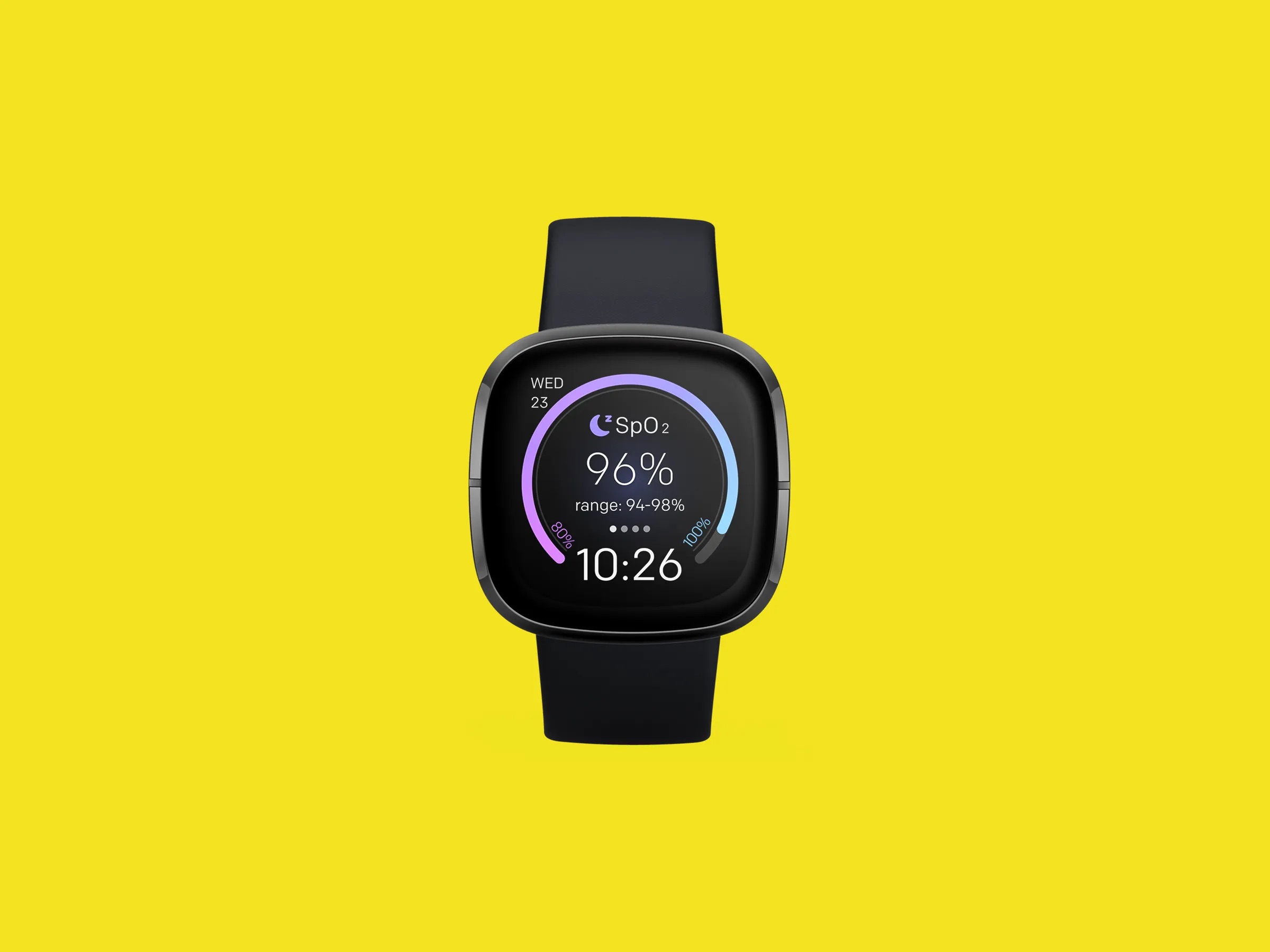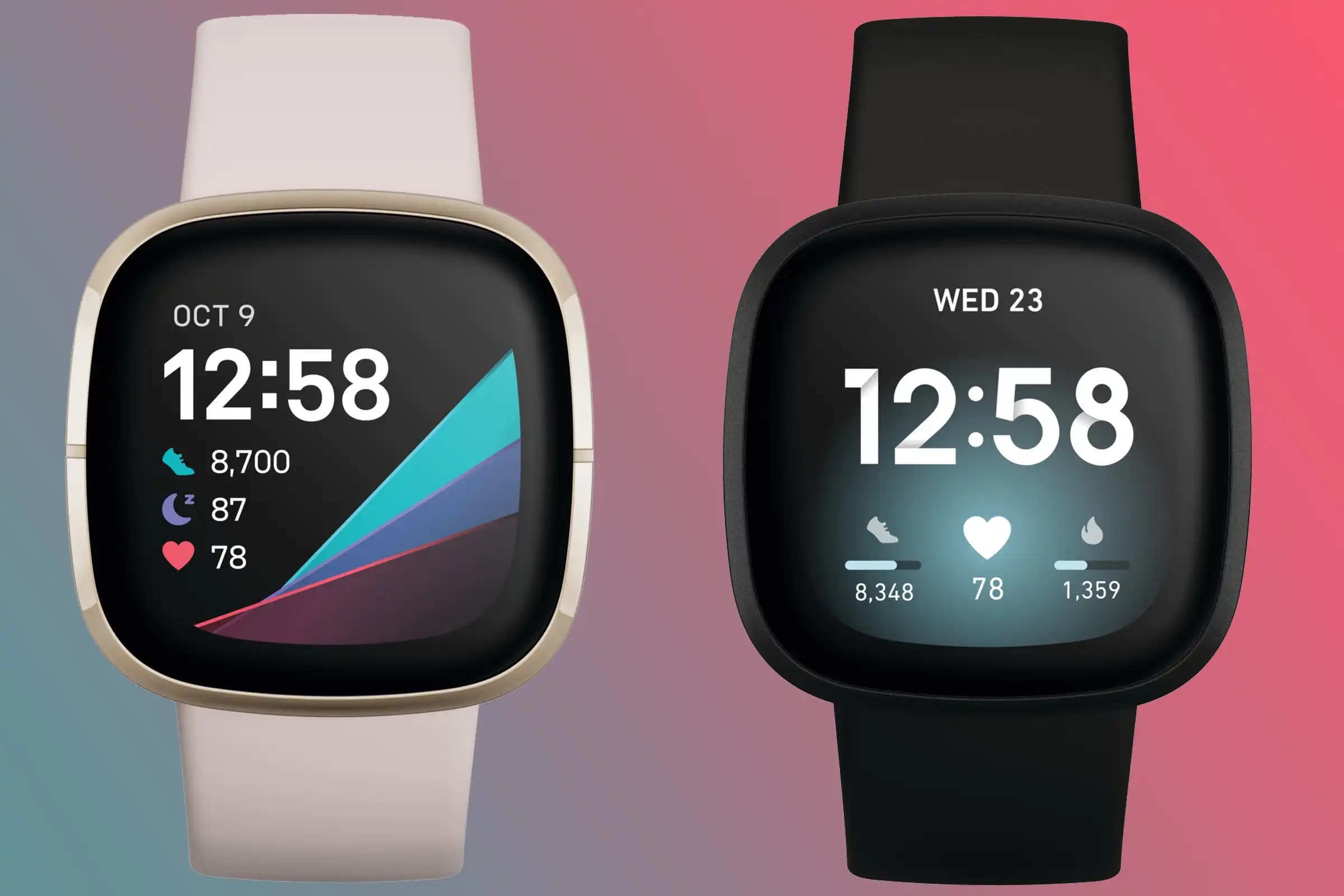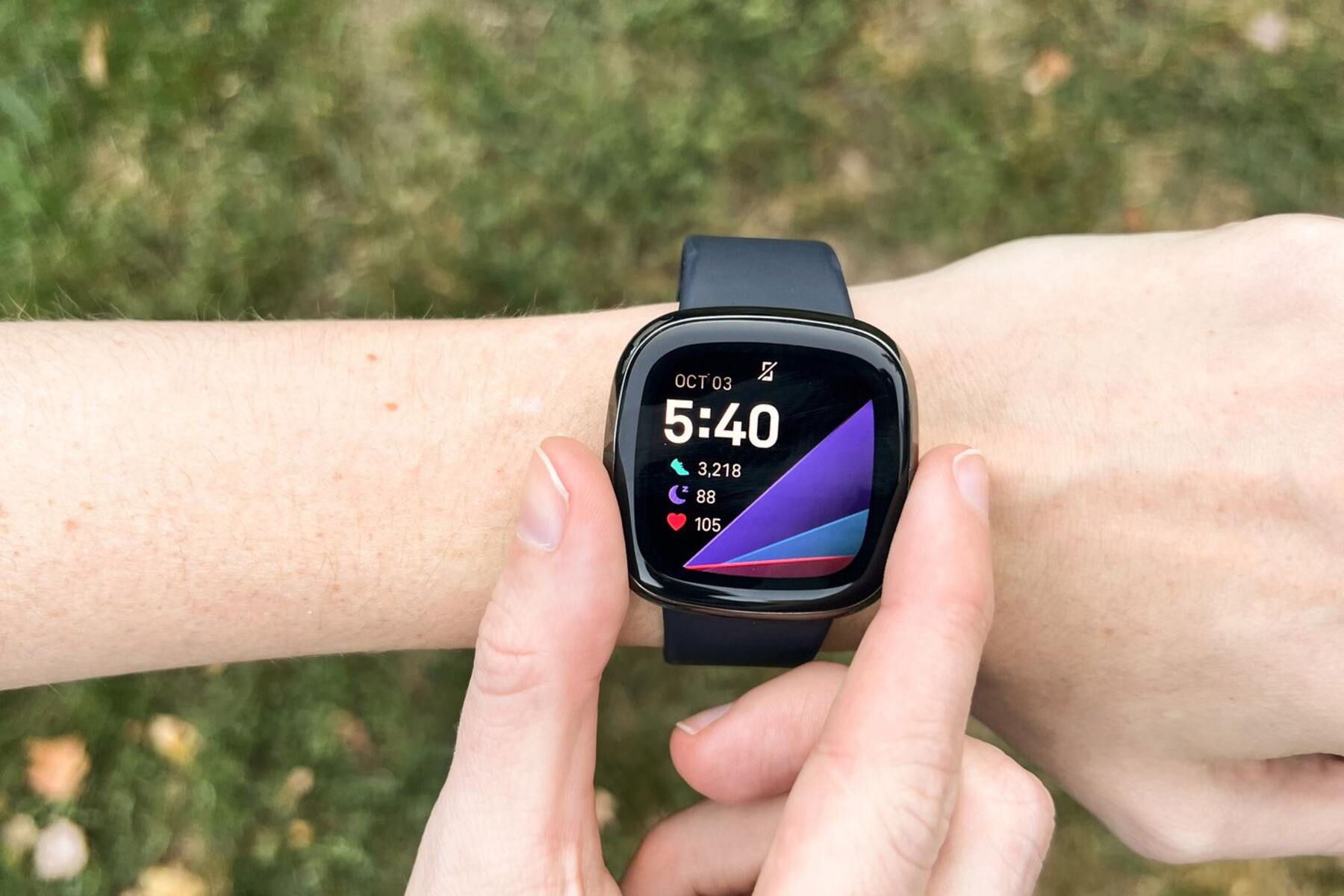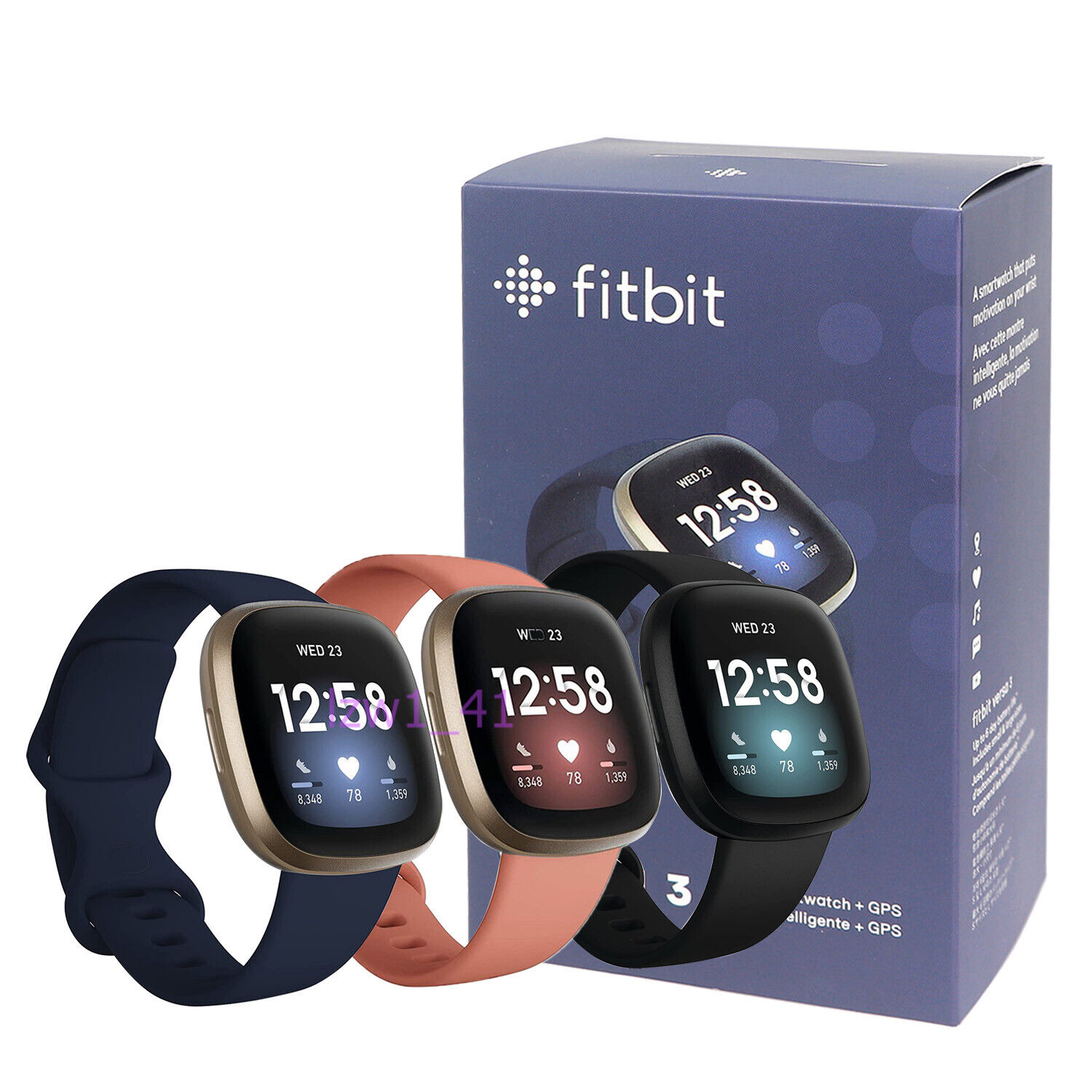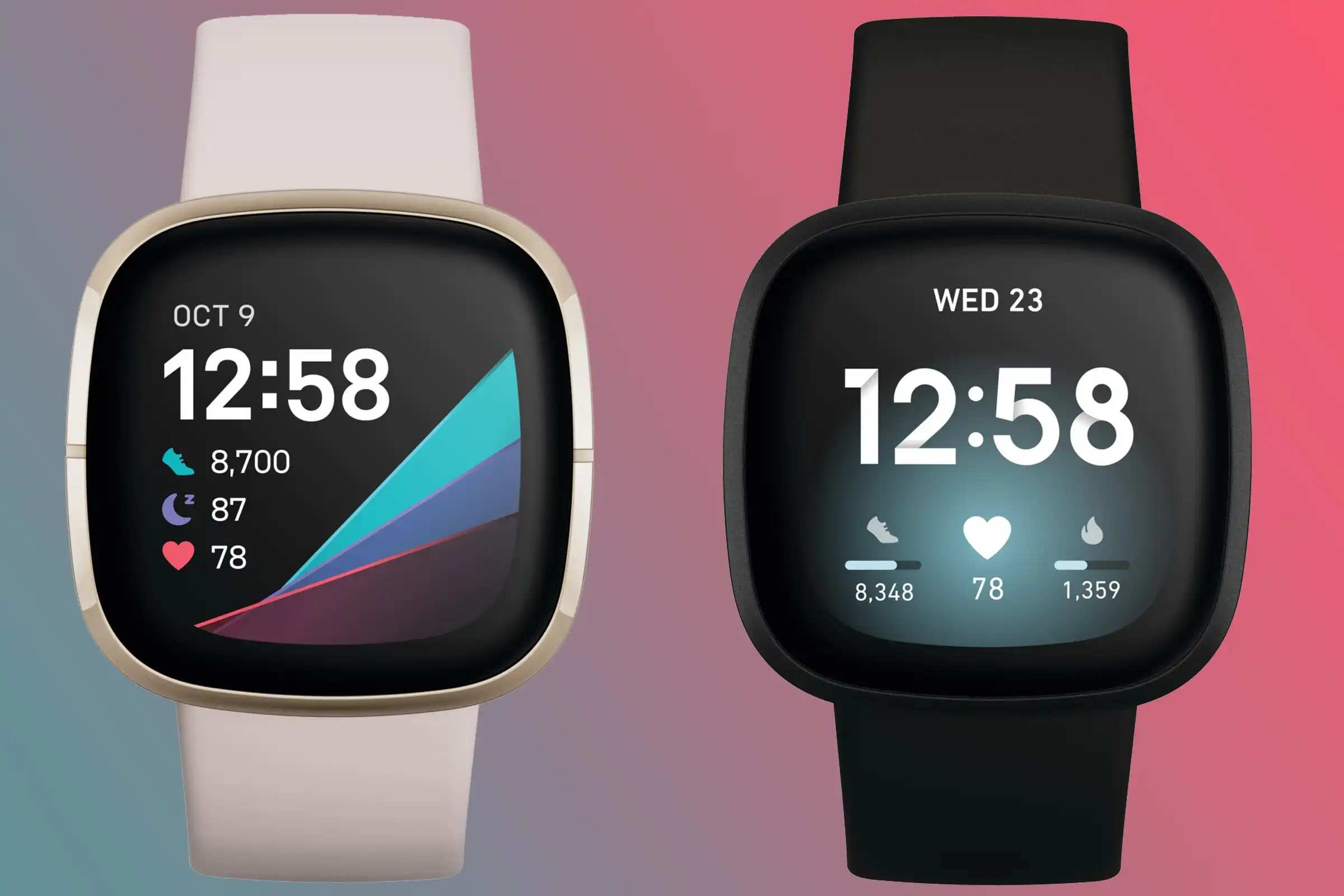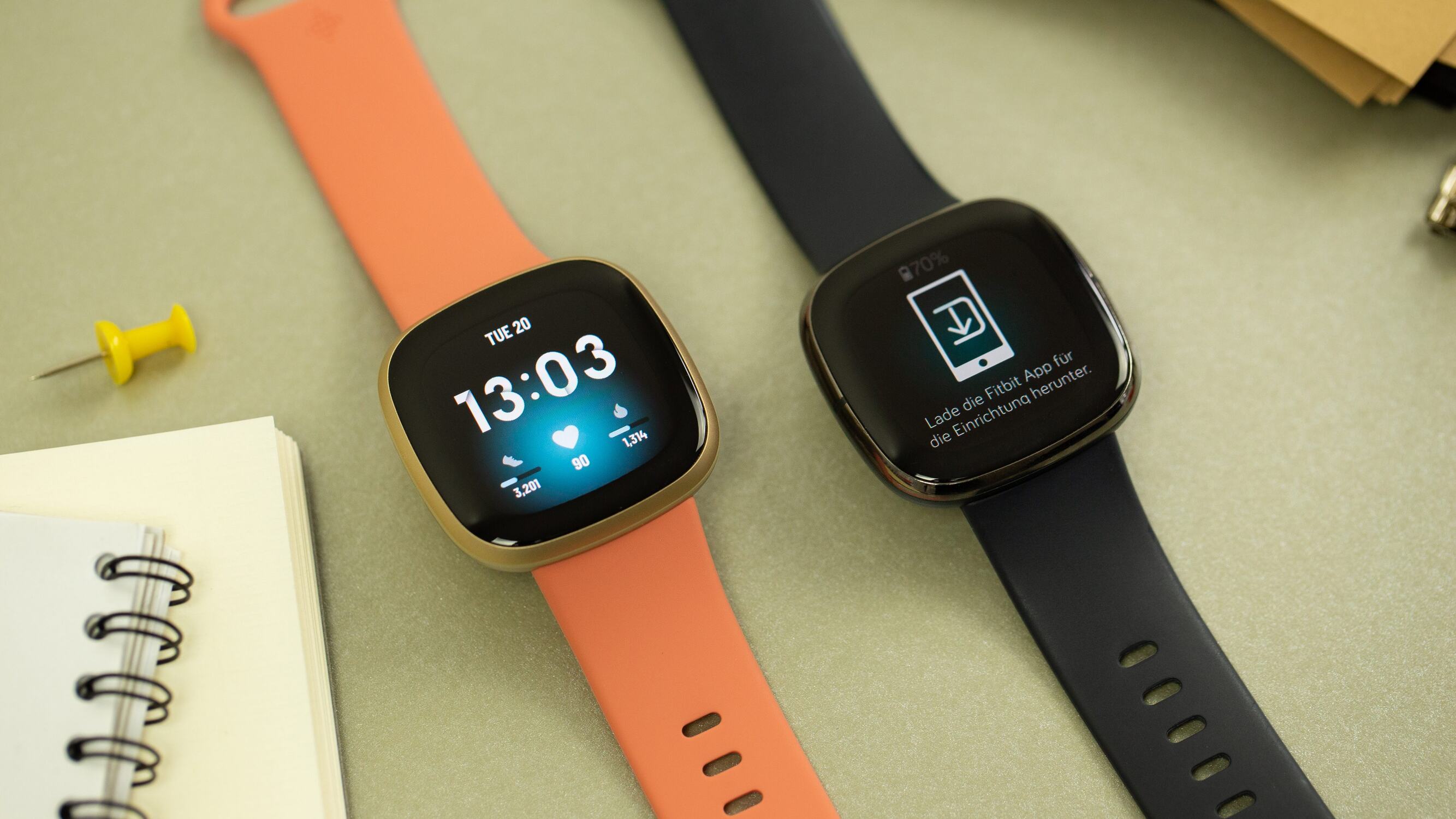Introduction
In today's fast-paced world, stress has become an inevitable part of our lives. The demands of work, personal responsibilities, and societal pressures often contribute to elevated stress levels, impacting our overall well-being. Recognizing the significance of stress management, Fitbit, a leading innovator in wearable technology, has integrated an advanced feature known as the Electrodermal Activity (EDA) scan into its devices. This feature is designed to provide users with valuable insights into their body's response to stress, ultimately empowering them to make informed decisions about their health and wellness.
The EDA scan feature on Fitbit represents a groundbreaking advancement in wearable technology, offering users a deeper understanding of their body's physiological responses to stressors. By leveraging this innovative tool, individuals can gain valuable insights into their stress levels, paving the way for proactive stress management strategies.
Stress, often referred to as the "silent killer," can manifest in various forms, impacting both mental and physical well-being. With the EDA scan feature, Fitbit aims to equip users with the knowledge and tools necessary to identify and address stress in its early stages. This proactive approach aligns with Fitbit's commitment to empowering individuals to take control of their health and well-being.
As we delve into the intricacies of the EDA scan feature on Fitbit, we will explore its functionality, benefits, and practical applications. By understanding how this feature works and its potential impact on stress management, users can harness the power of wearable technology to lead healthier, more balanced lives. Let's embark on a journey to unravel the transformative potential of the EDA scan feature and discover how it can be a game-changer in the pursuit of stress management and overall well-being.
What is EDA Scan Feature on Fitbit?
The EDA scan feature on Fitbit represents a significant advancement in wearable technology, designed to provide users with valuable insights into their body's response to stress. EDA, short for Electrodermal Activity, refers to the changes in the electrical conductance of the skin, which can be indicative of emotional and physiological arousal. Fitbit's incorporation of this feature into its wearable devices marks a pivotal shift in the realm of stress management, offering users a comprehensive tool to monitor and understand their body's stress responses.
The EDA scan feature operates by measuring subtle electrical changes in the skin's sweat levels, which are influenced by the sympathetic nervous system's activity. This physiological response can be triggered by various stressors, including emotional tension, environmental factors, or physical exertion. By capturing these nuanced changes, the EDA scan feature provides users with a holistic view of their body's stress patterns, enabling them to identify triggers and proactively manage their stress levels.
Fitbit's integration of the EDA scan feature underscores its commitment to enhancing users' well-being through actionable insights. By leveraging this technology, individuals can gain a deeper understanding of their body's stress responses, paving the way for informed decision-making and proactive stress management strategies. This feature empowers users to go beyond mere awareness of stress and delve into the realm of personalized stress management, fostering a holistic approach to well-being.
In essence, the EDA scan feature on Fitbit serves as a virtual stress management companion, offering real-time data and actionable insights to help users navigate the complexities of stress. By harnessing the power of wearable technology, individuals can gain a newfound sense of agency in addressing stress, fostering a proactive and personalized approach to well-being.
The incorporation of the EDA scan feature on Fitbit devices represents a paradigm shift in stress management, transcending traditional approaches by providing users with tangible, data-driven insights. This innovative feature exemplifies Fitbit's dedication to empowering individuals to take charge of their health and well-being, marking a significant stride in the intersection of technology and holistic wellness.
Through the EDA scan feature, Fitbit has ushered in a new era of stress management, equipping users with the tools and knowledge necessary to navigate the complexities of stress and lead balanced, fulfilling lives.
How Does EDA Scan Feature Work?
The EDA scan feature on Fitbit operates by leveraging advanced sensor technology to monitor subtle electrical changes in the skin, providing users with valuable insights into their body's response to stress. This innovative functionality is made possible through the integration of sophisticated sensors within Fitbit devices, which are capable of detecting electrodermal activity (EDA) – the changes in the skin's electrical conductance.
When an individual encounters stressors, whether they are emotional, environmental, or physical in nature, the sympathetic nervous system becomes activated, leading to subtle changes in sweat levels and skin conductance. The EDA scan feature on Fitbit captures these nuanced physiological responses, offering users a window into their body's stress patterns.
The EDA scan feature works by initiating a brief, guided session during which users are prompted to focus on their breath and take note of their current state of mind. Throughout this session, the sensors embedded in the Fitbit device track the user's EDA responses, capturing data that reflects the body's physiological arousal in response to stressors.
By measuring these subtle electrical changes in the skin, the EDA scan feature provides users with real-time insights into their body's stress levels, enabling them to identify patterns and triggers. This data-driven approach empowers individuals to gain a deeper understanding of their stress responses, fostering a proactive and personalized approach to stress management.
Furthermore, the EDA scan feature on Fitbit utilizes this captured data to generate personalized stress management recommendations, equipping users with actionable insights to mitigate the impact of stress on their overall well-being. Through this innovative functionality, individuals can harness the power of wearable technology to navigate the complexities of stress and make informed decisions regarding their health and wellness.
In essence, the EDA scan feature on Fitbit represents a pioneering application of sensor technology in the realm of stress management, offering users a comprehensive tool to monitor and understand their body's physiological responses to stress. This innovative feature exemplifies Fitbit's commitment to empowering individuals to take a proactive approach to managing stress and fostering holistic well-being.
Benefits of Using EDA Scan Feature
The EDA scan feature on Fitbit offers a myriad of benefits, empowering users to gain valuable insights into their body's response to stress and fostering proactive stress management strategies. By leveraging this innovative functionality, individuals can experience the following compelling advantages:
-
Personalized Stress Insights: The EDA scan feature provides users with personalized insights into their body's stress responses, enabling them to gain a deeper understanding of their unique stress patterns. This personalized approach equips individuals with tailored recommendations for managing stress, fostering a more effective and targeted approach to well-being.
-
Real-Time Stress Monitoring: With the EDA scan feature, users can monitor their body's stress levels in real time, gaining immediate awareness of their physiological responses to stressors. This real-time monitoring capability empowers individuals to proactively address heightened stress levels, fostering a proactive and preventative approach to stress management.
-
Identifying Stress Triggers: By capturing subtle electrical changes in the skin, the EDA scan feature enables users to identify specific stress triggers and patterns. This invaluable insight allows individuals to pinpoint the factors that contribute to their stress levels, paving the way for targeted interventions and personalized stress management strategies.
-
Enhanced Well-Being: The EDA scan feature empowers users to take proactive steps in managing their stress, ultimately contributing to enhanced overall well-being. By gaining a deeper understanding of their body's stress responses and implementing personalized stress management recommendations, individuals can experience a tangible improvement in their mental and physical well-being.
-
Data-Driven Decision-Making: Leveraging the EDA scan feature equips users with data-driven insights, enabling them to make informed decisions regarding their stress management strategies. This evidence-based approach empowers individuals to implement effective interventions based on their body's physiological responses, fostering a more targeted and impactful approach to stress management.
-
Holistic Wellness: By integrating the EDA scan feature into their daily routine, users can embrace a holistic approach to wellness that encompasses both mental and physical well-being. This feature goes beyond mere stress awareness, fostering a proactive and comprehensive approach to well-being that aligns with Fitbit's commitment to empowering individuals to lead balanced, fulfilling lives.
In essence, the EDA scan feature on Fitbit offers a transformative array of benefits, empowering users to gain personalized insights, monitor stress in real time, identify triggers, and make data-driven decisions regarding their stress management. By leveraging this innovative feature, individuals can embark on a journey toward holistic wellness, equipped with actionable insights to navigate the complexities of stress and lead healthier, more balanced lives.
How to Use EDA Scan Feature on Fitbit
Using the EDA (Electrodermal Activity) scan feature on Fitbit is a straightforward and empowering process that enables users to gain valuable insights into their body's response to stress. To initiate an EDA scan session, users can follow these simple steps:
-
Accessing the EDA Scan Feature: Begin by navigating to the EDA scan feature on your Fitbit device. Depending on the specific model, this feature may be accessible through the device's interface or the Fitbit app on your smartphone. Once accessed, users can select the EDA scan option to commence a session.
-
Engaging in a Guided Session: Upon initiating the EDA scan session, users will be guided through a brief, focused breathing exercise designed to facilitate relaxation and mindfulness. This guided session serves as a foundation for capturing the body's EDA responses to stressors.
-
Monitoring EDA Responses: As the guided session progresses, the sensors embedded in the Fitbit device will track the user's EDA responses in real time. These responses are indicative of the body's physiological arousal, offering insights into stress levels and emotional tension.
-
Reviewing EDA Scan Data: Upon completion of the EDA scan session, users can review the captured data through the Fitbit app or device interface. This data provides a comprehensive overview of the body's stress responses, including patterns, intensity, and duration.
-
Interpreting Insights and Recommendations: The EDA scan feature generates personalized insights and recommendations based on the captured data, empowering users to understand their stress patterns and implement targeted stress management strategies. These insights may include recommendations for mindfulness practices, relaxation techniques, or physical activities tailored to individual stress responses.
By following these steps, users can harness the power of the EDA scan feature on Fitbit to gain a deeper understanding of their body's response to stress and embark on a journey toward proactive stress management. This user-friendly process empowers individuals to take charge of their well-being, leveraging wearable technology to navigate the complexities of stress and foster holistic wellness.
In essence, the EDA scan feature on Fitbit represents a seamless and accessible tool for individuals seeking to gain valuable insights into their body's stress responses, ultimately paving the way for personalized and proactive stress management strategies.
Understanding EDA Scan Data and Interpretation
Upon completing an EDA scan session using the Fitbit device, users gain access to valuable data that provides insights into their body's physiological responses to stress. This data serves as a foundation for understanding stress patterns, identifying triggers, and formulating personalized stress management strategies.
The EDA scan data encompasses a comprehensive overview of the body's electrodermal activity, capturing subtle electrical changes in the skin that are indicative of emotional and physiological arousal. This data is presented in a user-friendly format, allowing individuals to delve into the nuances of their stress responses and gain actionable insights.
Key components of the EDA scan data include:
-
Stress Patterns: The data reveals patterns in the body's stress responses, shedding light on the frequency and intensity of physiological arousal. By identifying recurring patterns, users can gain a deeper understanding of their stress triggers and develop targeted interventions.
-
Stress Intensity: The EDA scan data quantifies the intensity of the body's stress responses, providing users with a tangible measure of their physiological arousal. This insight enables individuals to gauge the severity of their stress levels and implement appropriate stress management techniques.
-
Session Duration: Users can review the duration of their EDA scan sessions, offering insights into the temporal aspects of stress responses. Understanding the duration of physiological arousal empowers individuals to tailor their stress management practices to effectively mitigate stress over varying time frames.
Interpreting the EDA scan data is a pivotal aspect of leveraging this feature for proactive stress management. Fitbit's integration of personalized interpretation and recommendations based on the captured data equips users with actionable insights to navigate their stress responses effectively.
The interpretation of EDA scan data may include:
-
Identifying Triggers: By analyzing the EDA scan data, users can identify specific triggers that elicit heightened stress responses. This insight enables individuals to proactively address stress triggers and implement targeted interventions to mitigate their impact.
-
Mindfulness and Relaxation Recommendations: Based on the captured data, the EDA scan feature generates personalized recommendations for mindfulness practices and relaxation techniques tailored to individual stress responses. These recommendations empower users to incorporate effective stress management strategies into their daily routine.
-
Physical Activity Insights: The EDA scan data may inform recommendations for physical activities that can help alleviate stress. By understanding their physiological responses, users can leverage targeted physical activities to counteract stress and promote overall well-being.
In essence, the EDA scan data and its interpretation offer users a wealth of insights into their body's stress responses, paving the way for personalized and effective stress management strategies. By harnessing this data and the accompanying recommendations, individuals can embark on a journey toward proactive stress management, empowered by actionable insights derived from their physiological responses to stress.
Tips for Managing Stress Using EDA Scan Feature
Harnessing the EDA scan feature on Fitbit as a tool for managing stress goes beyond mere data collection; it empowers individuals to proactively address stress and foster holistic well-being. Here are some valuable tips for effectively utilizing the EDA scan feature to manage stress:
-
Regular EDA Scan Sessions: Incorporate regular EDA scan sessions into your routine to gain consistent insights into your body's stress responses. By establishing a cadence for EDA scan sessions, you can track changes in your stress patterns over time, enabling you to identify trends and triggers.
-
Mindful Breathing Practices: During EDA scan sessions, leverage the guided breathing exercises as an opportunity to cultivate mindfulness and relaxation. Focused breathing techniques can help regulate stress responses and promote a sense of calm, contributing to overall stress management.
-
Review and Reflect on Data: Take the time to review and reflect on the EDA scan data captured during each session. By analyzing the data, you can gain a deeper understanding of your stress patterns and identify specific situations or activities that may contribute to heightened stress levels.
-
Implement Personalized Recommendations: Act on the personalized recommendations generated from the EDA scan data interpretation. Whether it involves engaging in mindfulness practices, incorporating relaxation techniques, or integrating physical activities, implementing these tailored recommendations can significantly impact your stress management efforts.
-
Track Lifestyle Factors: Consider tracking lifestyle factors such as sleep patterns, physical activity, and nutrition in conjunction with EDA scan data. Understanding how these factors intersect with your stress responses can provide comprehensive insights into your overall well-being and inform targeted interventions.
-
Integrate Stress-Relief Activities: Utilize the insights derived from EDA scan data to integrate stress-relief activities into your daily routine. Whether it's engaging in mindfulness exercises, practicing yoga, or participating in outdoor activities, incorporating stress-relief practices can contribute to a balanced approach to stress management.
-
Seek Professional Guidance: If you observe persistent or heightened stress responses, consider consulting with a healthcare professional or mental health expert. The EDA scan feature can provide valuable data to facilitate informed discussions and personalized recommendations for managing stress effectively.
By incorporating these tips into your utilization of the EDA scan feature on Fitbit, you can embark on a proactive journey toward managing stress and fostering holistic well-being. The combination of data-driven insights, personalized recommendations, and targeted interventions empowers individuals to navigate the complexities of stress with informed decision-making and proactive strategies.
Conclusion
The integration of the Electrodermal Activity (EDA) scan feature into Fitbit devices signifies a pivotal advancement in the realm of stress management and holistic well-being. By offering users a comprehensive tool to monitor and understand their body's physiological responses to stress, Fitbit has empowered individuals to embark on a proactive journey toward stress management. The EDA scan feature goes beyond traditional stress awareness, providing actionable insights and personalized recommendations based on real-time data, ultimately fostering a transformative approach to well-being.
In conclusion, the EDA scan feature on Fitbit represents a paradigm shift in the intersection of wearable technology and stress management. By leveraging advanced sensor technology, guided sessions, and personalized data interpretation, users can gain a deeper understanding of their stress patterns, identify triggers, and implement targeted interventions. This user-friendly and empowering process equips individuals with the tools and knowledge necessary to navigate the complexities of stress, fostering a holistic approach to well-being.
As we navigate the demands of daily life, the EDA scan feature serves as a virtual companion, offering real-time insights and evidence-based recommendations to support individuals in their quest for balanced, fulfilling lives. By embracing regular EDA scan sessions, integrating personalized recommendations, and implementing targeted stress-relief activities, users can harness the power of this feature to manage stress effectively and promote overall well-being.
Fitbit's commitment to empowering individuals to take charge of their health and well-being is exemplified through the EDA scan feature, which stands as a testament to the transformative potential of wearable technology. Through data-driven insights, mindfulness practices, and proactive stress management strategies, individuals can leverage this feature to cultivate resilience, foster balance, and embark on a journey toward holistic wellness.
In essence, the EDA scan feature on Fitbit represents a beacon of empowerment, offering users the knowledge, tools, and support necessary to navigate the complexities of stress with confidence and informed decision-making. As we embrace the transformative potential of wearable technology in the pursuit of well-being, the EDA scan feature stands as a testament to the intersection of innovation, empowerment, and holistic health.







